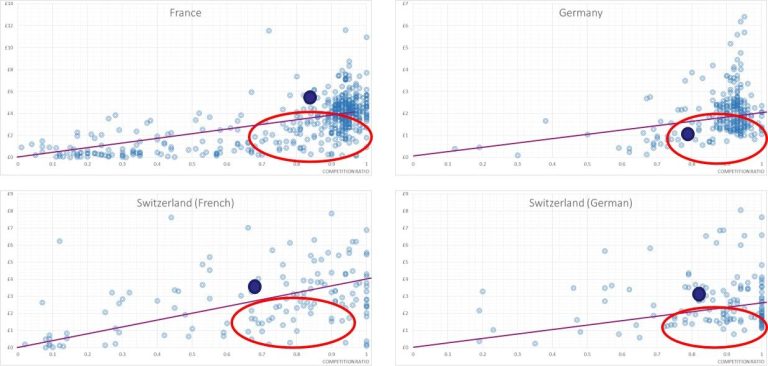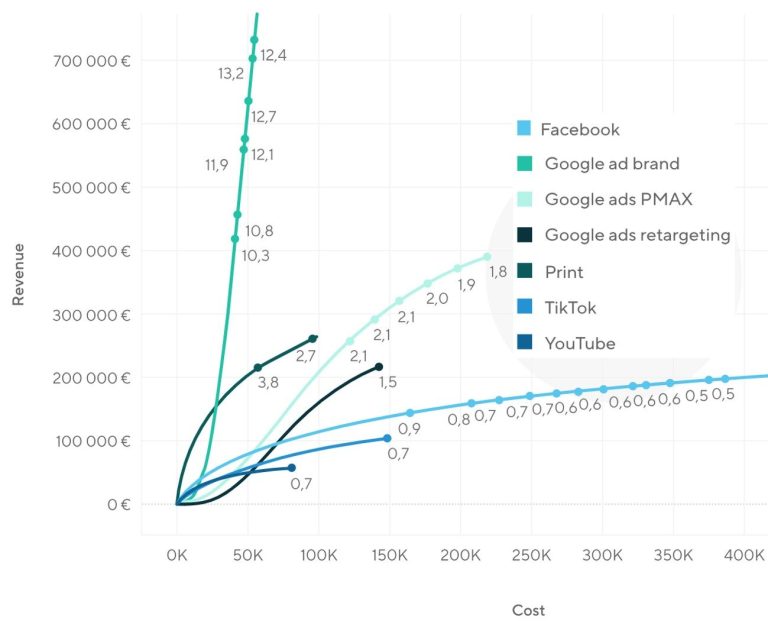How
The 'How' dimension is about how prospects and customers consume information. Its not which platforms/ channels are they technically on, but whether they actively engage there, to ensure spend in each channel is being effective.

Comms Planning
[Stand]
The right message to the right audience and the right time need to be through the right channel.
The science of delivering truly channel-agnostic communications is of vital importance in today's crowded media environment. More than ever, consumers experience brand messages across a plethora of channels and planning is essential to ensure each individual communication contributes to creating a significantly greater whole.
The Communications Plan provides the disciplined framework that helps ensure all marketing investments are talking to the target audience as efficiently as possible. As such, it can operate as a checklist to ensure that all requirements of a communication have been specifically met, considering the who, what, when and by whom.

Channel Cascade
[Stand]
Going for the lowest cost option first would seem the best approach, but the metric used should be Engagement/Cost rather than just cost as that will be an indicator that they are actually listening. But the best metric would have also compare the cost to return, if possible.
Obvious savings come from not targeting the same prospect in more than one channel, unless part of joined up marketing plan. Attribution models do make a strong argument around multiple contacts and the power of each, but the law of diminishing returns suggest that subsequent spend won't make incremental sales and can look like spam/stalking.
Be conscious of those who are not contacted much or never contacted. The best time for mopping up the rest is that time of year when you're best offers are available.

Channel Cascade: Wasted spend scrubber [Walk]
"Half the money I spend on advertising is wasted; the trouble is I don’t know which half.” - John Wanamaker (over 100 years ago).
All channels think they are amazing and will guarantee sales for every company. But actually their business model is based around maximising income, and the number of targets are not growing, and in some cases the numbers that are 'listening' are diminishing - so competition is pushing costs up and economies of scale are reversing.
The solution is to be parsimonious. Stop making mistakes. Stop others making mistakes. Stop using channels that don't work. Stop using selections or key words that don't work.
A Scubber model can identify the tranche of worst campaigns and blocking theses will move the fulcrum and instantly increase ROAS. But do consider how to data-mine those excluded areas for any gold left behind.

Attribution
[Run]
Marketing spend is the life blood of so many companies out there, from Agency to Platform and their job is to get us to spend more each year. Finance want us to spend less. Marketing Science should be the arbiter of this conundrum.
Attribution models are an attempt to isolate which campaigns in which channels are being effective in the complexity of the Marketing Funnel whilst ignoring the politics of self preservation. There are a few different methods and no one method will correctly capture the truth of the various engagements that contributed to the sale. In fact sales tend to be double counted as departments will try to bolster their success. And certain platforms will not provide or cannot provide all the data needed to make the best calculations. The more complex the model's objective, the more likely key data will be missing and could be classified as pseudo-attribution models that produce a KPI rather than tacit tactical direction.
Here are a few examples of attribution of specific customer (bottom-up approach):
o First Click v Last Click Attribution – Single source methods which attributed to the engagement or sale, respectively. A quick but blunt method.
o MCA - Multi-channel attribution attributes to the channel itself rather than multiple or specific touchpoints. A refinement of MMM but only for Digital interactions.
o MTA - Multi-touch attribution models measure more complex sales cycles, and they are designed to weigh effectiveness across multiple customer interactions in the channels over time. e.g. Data-driven attribution (DDA) model uses machine learning to track large amounts of consumer data and try to infill untrackable data as best as possible. Doesn’t always compensate for business models that have a lot of non-digital/direct interactions or sales.

Media Mix Model
[Run]
MMM - Marketing Mix Modelling analyses effectiveness of marketing budget distribution from a top-down perspective to determine their impact on a company's return on investment. Like most forecasting tools can involve politics, lobbying and some experienced guess work. A bit generalist and not done that often as best for budgeting/strategy rather than tactics.

We need your consent to load the translations
We use a third-party service to translate the website content that may collect data about your activity. Please review the details in the privacy policy and accept the service to view the translations.

